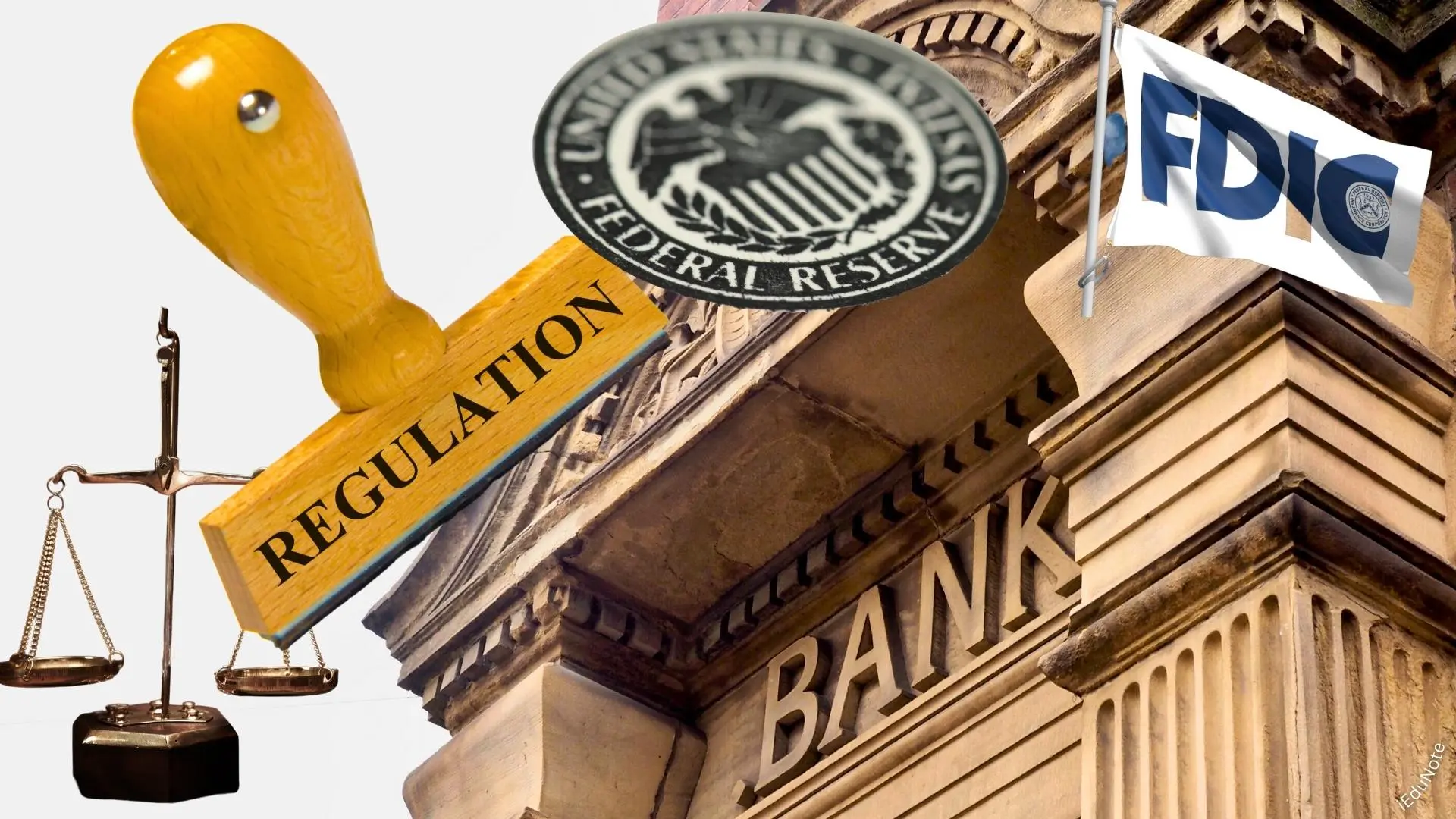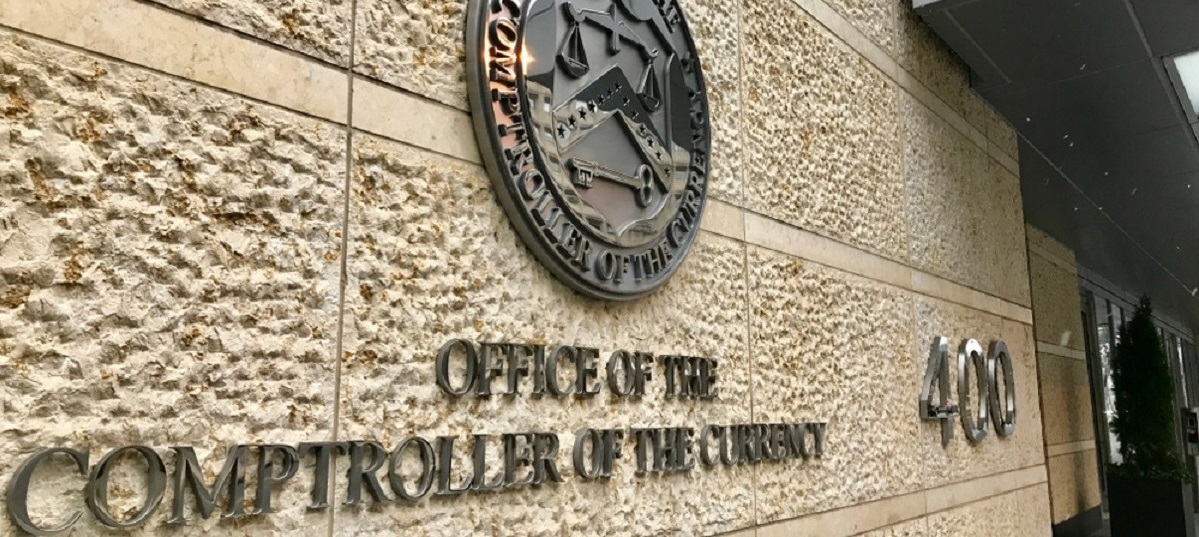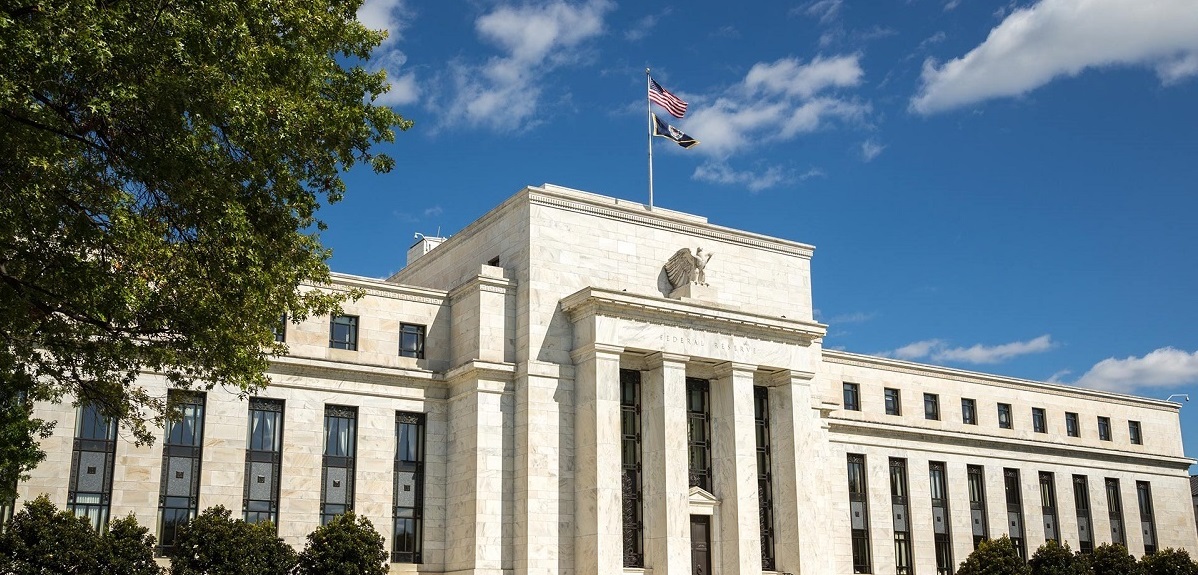Introduction
Banking regulations play a crucial role in governing the operations and activities of the banking industry. These regulations serve as a set of guidelines and standards that financial institutions must adhere to, in order to maintain stability, safeguard customer interests, and prevent financial crises. The purpose of banking regulations is to ensure that banks operate in a responsible and transparent manner, and that they don’t engage in risky practices that could jeopardize the overall financial system.
At their core, banking regulations are designed to maintain the confidence of depositors and investors in the banking system. They provide a framework for the supervision and governance of banks, setting forth rules and requirements that banks must follow to protect the interests of depositors, borrowers, and the economy as a whole. These regulations cover a wide range of areas, including capital requirements, risk management, customer protection, anti-money laundering measures, and prudent lending practices, among others.
Over the years, banking regulations have evolved in response to changing market dynamics and financial crises. The global financial crisis of 2008, for example, highlighted the need for stronger regulations to prevent excessive risk-taking and ensure greater transparency in the banking industry. As a result, regulatory bodies around the world have introduced stricter rules and regulations aimed at enhancing the stability and resilience of banks.
In recent years, the emergence of digital banking and fintech has posed new challenges for banking regulators. As technology continues to reshape the financial landscape, regulators must adapt to address issues such as cybersecurity, data privacy, and the risks associated with digital transactions. Furthermore, the rapid growth of non-bank financial institutions, such as peer-to-peer lending platforms and digital payment providers, has raised questions about the appropriate regulatory framework for these entities.
While banking regulations are generally seen as necessary for maintaining financial stability, they are not without controversy. Critics argue that excessive regulations can stifle innovation and create unnecessary burdens for banks, potentially limiting their ability to support economic growth. Striking the right balance between regulatory oversight and encouraging innovation is a key challenge faced by regulators worldwide.
Definition of Banking Regulations
Banking regulations refer to a set of rules, guidelines, and safeguards that are imposed by regulatory authorities on the operations and activities of banks and financial institutions. These regulations are put in place to ensure the integrity, stability, and transparency of the banking industry, and to protect the interests of depositors, borrowers, and the overall economy.
The scope of banking regulations is broad and covers various aspects of banking operations. This includes regulations on capital adequacy requirements, risk management practices, lending standards, liquidity management, customer protection, anti-money laundering measures, and disclosure requirements, among others. The purpose of these regulations is to minimize risks and prevent behaviors that could lead to financial instability, such as excessive risk-taking, fraud, and unethical practices.
One of the key objectives of banking regulations is to ensure the soundness of the banking system. Banks are required to maintain a certain level of capital to absorb potential losses and withstand economic downturns. This capital adequacy requirement acts as a buffer, protecting both depositors and the overall financial system from potential bank failures.
Another important aspect of banking regulations is the protection of consumers. Regulators establish rules to ensure that banks provide fair and transparent services to their customers. These regulations may cover areas such as disclosure of fees and charges, handling of customer complaints, and safeguards to protect customer data and privacy.
Banking regulations also play a vital role in preventing financial crimes, such as money laundering and terrorist financing. Banks are required to have robust screening processes in place to detect and report suspicious activities. Additionally, regulators may impose stringent Know Your Customer (KYC) requirements to ensure that banks have adequate information about their customers and the source of funds.
Overall, banking regulations are essential for maintaining the stability, integrity, and trust within the banking industry. They provide a framework that promotes responsible and ethical behavior among banks and helps to safeguard the interests of all stakeholders involved. By adhering to these regulations, banks can not only protect themselves from financial risks but also contribute to the overall health and functioning of the economy.
Purpose of Banking Regulations
The purpose of banking regulations is multi-faceted, with the primary goal being to ensure the stability, integrity, and smooth functioning of the banking industry. These regulations are designed to serve the interests of various stakeholders, including depositors, borrowers, investors, and the economy as a whole. By establishing rules and standards for banks to follow, banking regulations aim to achieve the following objectives:
1. Financial Stability: One of the primary purposes of banking regulations is to maintain the stability of the banking system. These regulations require banks to maintain adequate capital levels, implement risk management practices, and adopt appropriate lending standards. By doing so, they aim to prevent excessive risk-taking, minimize the possibility of bank failures, and safeguard the overall financial system from systemic risks.
2. Protecting Depositors: Banking regulations are essential for protecting the interests of depositors. Regulations often include deposit insurance schemes that guarantee a certain level of protection for depositor funds, even in the event of a bank failure. These regulations also establish rules for banks to handle customer accounts, ensuring that funds are securely held and readily accessible.
3. Consumer Protection: Another purpose of banking regulations is to ensure fair treatment and protection for consumers. Banks are required to adhere to a set of regulations that govern their interactions with customers, including the disclosure of fees and charges, the provision of clear and understandable terms and conditions, and guidelines for handling customer complaints. These regulations help to promote transparency and trust in the banking industry.
4. Preventing Financial Crimes: Banking regulations play a vital role in combating financial crimes, such as money laundering and terrorist financing. Regulators establish rules and requirements that banks must follow to detect, prevent, and report suspicious activities. These regulations include robust anti-money laundering measures, customer due diligence requirements, and the implementation of transaction monitoring systems.
5. Maintaining Market Confidence: Effective banking regulations help to maintain market confidence by ensuring that banks operate in a responsible and transparent manner. When consumers and investors have trust in the banking sector, they are more likely to engage in financial transactions, invest in banks, and contribute to the overall growth and stability of the economy.
In summary, the purpose of banking regulations is to foster stability, protect stakeholders, ensure fair treatment of consumers, prevent financial crimes, and maintain market confidence. These regulations create a level playing field for banks, promote responsible behavior, and contribute to the overall health and functioning of the banking industry and the wider economy.
Types of Banking Regulations
Banking regulations can be categorized into various types, each addressing different aspects of banking operations and risk management. These regulations are put in place to ensure the stability, transparency, and integrity of the banking industry. Here are some of the key types of banking regulations:
1. Capital Adequacy Regulations: Capital adequacy regulations require banks to maintain a minimum level of capital in relation to their risk-weighted assets. These regulations aim to ensure that banks have sufficient capital buffers to withstand potential losses and financial shocks. The most widely recognized capital adequacy regulation is the Basel III framework, which outlines the minimum capital requirements and risk management standards for banks.
2. Liquidity Regulations: Liquidity regulations require banks to maintain sufficient liquid assets to meet their short-term obligations. These regulations aim to prevent liquidity crises and ensure that banks have the ability to honor withdrawals and other financial commitments. Central banks and regulators often impose liquidity requirements, such as the Liquidity Coverage Ratio (LCR) and the Net Stable Funding Ratio (NSFR), to promote liquidity management and stability.
3. Risk Management Regulations: Risk management regulations focus on the identification, assessment, and mitigation of risks within banks. These regulations require banks to establish robust risk management frameworks, including policies and procedures to manage credit risk, market risk, operational risk, and other types of risks. Regulators may also require banks to conduct stress tests to evaluate their resilience to adverse scenarios.
4. Consumer Protection Regulations: Consumer protection regulations are designed to safeguard the rights and interests of banking customers. These regulations establish guidelines and requirements for fair and transparent practices, such as disclosing fees and charges, providing clear product information, and handling customer complaints. Consumer protection regulations aim to ensure that customers are treated fairly and have access to the information they need to make informed financial decisions.
5. Anti-Money Laundering (AML) and Know Your Customer (KYC) Regulations: AML and KYC regulations are crucial in preventing financial crimes, such as money laundering, terrorist financing, and fraud. These regulations require banks to implement robust procedures to verify customer identities, monitor transactions for suspicious activities, and report any suspicious transactions to the appropriate authorities. AML and KYC regulations help to maintain the integrity of the financial system and protect it from abuse.
6. Market Conduct Regulations: Market conduct regulations aim to promote fair and ethical conduct in the banking industry. These regulations cover areas such as market abuse prevention, insider trading, conflicts of interest, and information disclosure. Market conduct regulations ensure that banks and their employees adhere to high ethical standards, preventing unfair practices and maintaining market integrity.
These are just a few examples of the types of banking regulations that exist. The specific regulations vary across jurisdictions and depend on the regulatory framework in place. The overarching goal is to create a robust regulatory environment that promotes stability, protects consumers, prevents financial crimes, and maintains market confidence in the banking industry.
Examples of Banking Regulations
Banking regulations vary across jurisdictions, but there are some common examples that illustrate the types of regulations that exist in the industry. These regulations are designed to ensure the stability, transparency, and integrity of the banking sector. Here are a few examples of banking regulations:
1. Basel III: Basel III is a set of global banking regulations that aims to strengthen the resilience of banks and enhance risk management. It introduces higher capital requirements, liquidity requirements, and additional risk management standards. The regulations have been implemented by various countries to promote financial stability and reduce the risk of another financial crisis.
2. Dodd-Frank Act: The Dodd-Frank Act, enacted in the United States in response to the global financial crisis, introduced comprehensive reforms and regulations for the financial industry. It created the Consumer Financial Protection Bureau (CFPB) to protect consumers and introduced stricter regulations on capital requirements, derivatives trading, mortgage lending, and other areas. The act aims to prevent another financial crisis and protect consumers from abusive practices.
3. MiFID II: The Markets in Financial Instruments Directive II (MiFID II) is a European Union regulation that governs investment services and activities across member states. It introduces stricter requirements for investor protection, transparency, and market integrity. The regulation covers areas such as client categorization, best execution, reporting of transactions, and product governance.
4. Bank Secrecy Act (BSA): The Bank Secrecy Act is a U.S. regulation that requires financial institutions, including banks, to report transactions that involve cash amounts exceeding a certain threshold. It aims to combat money laundering, terrorist financing, and other financial crimes by ensuring that banks have proper controls and reporting mechanisms in place. The BSA also outlines customer identification and due diligence requirements.
5. Payment Services Directive 2 (PSD2): PSD2 is a European Union directive that aims to promote competition, innovation, and security in payment services. It introduces requirements for open banking, which allows third-party providers to access bank accounts and initiate payments on behalf of customers. The regulation sets out standards for strong customer authentication and requires banks to share certain customer data with authorized third parties.
These are just a few examples of banking regulations that exist globally. Each country has its own specific regulations and regulatory bodies responsible for enforcing them. These regulations are essential for maintaining a stable and well-functioning banking industry, protecting consumer rights, preventing financial crimes, and promoting transparency and accountability in the financial system.
Agencies Responsible for Banking Regulations
Banking regulations are enforced and overseen by various regulatory agencies around the world. These agencies have the responsibility to ensure that banks and financial institutions comply with the regulations and maintain a safe and stable banking system. The specific agencies vary by country, but here are some examples of key regulatory bodies responsible for banking regulations:
1. Federal Reserve System (Fed): In the United States, the Federal Reserve System is the central banking authority and the primary regulator of banks. The Fed is responsible for formulating and implementing monetary policy, as well as supervising and regulating banking institutions to maintain financial stability and promote consumer protection.
2. Office of the Comptroller of the Currency (OCC): The OCC is an independent regulatory agency in the United States that supervises and regulates national banks and federal savings associations. It ensures that banks operate safely and soundly, comply with banking laws and regulations, and treat customers fairly.
3. European Central Bank (ECB): The ECB is responsible for the monetary policy and financial stability of the Eurozone countries. It, along with national banking regulators, oversees and regulates banks within the Eurozone, ensuring compliance with banking regulations such as capital adequacy requirements and risk management standards.
4. Financial Conduct Authority (FCA): The FCA is the regulatory body in the United Kingdom responsible for overseeing financial markets and the conduct of financial institutions. It regulates banks, investment firms, and insurance companies, ensuring compliance with regulations related to consumer protection, market integrity, and competition.
5. Australian Prudential Regulation Authority (APRA): APRA is the prudential regulator of the financial services industry in Australia. It supervises banks, credit unions, insurance companies, and superannuation funds, ensuring their financial soundness, stability, and compliance with prudential standards.
6. China Banking and Insurance Regulatory Commission (CBIRC): The CBIRC is the regulatory authority for banking and insurance sectors in China. It oversees and regulates the operations of banks and insurance companies, ensuring compliance with regulations, managing risks, and promoting the stability and development of the financial sector.
These are just a few examples of regulatory agencies responsible for banking regulations. Each country has its own specific regulatory framework and agencies to oversee the banking sector. These regulatory bodies play a crucial role in maintaining the integrity, stability, and transparency of the banking industry and ensuring the protection of consumers and investors.
Challenges and Controversies of Banking Regulations
While banking regulations are meant to ensure the stability and integrity of the banking industry, they are not without challenges and controversies. The implementation and enforcement of these regulations can give rise to various issues that impact banks, consumers, and the overall economy. Here are some of the key challenges and controversies of banking regulations:
1. Compliance Burden: Banking regulations often come with a significant compliance burden for financial institutions. The extensive requirements and reporting obligations can be complex, time-consuming, and costly to implement. Smaller banks, in particular, may struggle to keep up with the ever-changing regulatory landscape, leading to a disproportionate burden on them compared to larger institutions.
2. Impact on Banking Innovation: Some argue that excessive regulations can stifle innovation in the banking industry. Strict compliance requirements may discourage banks from adopting new technologies or exploring new business models. Balancing the need for regulations with the promotion of innovation and fintech advancements becomes a challenge for regulators, as they aim to foster growth while mitigating risks.
3. Regulatory Arbitrage: Banking regulations vary across jurisdictions, which can lead to regulatory arbitrage. This refers to the practice where banks choose to operate in countries or regions with more favorable regulatory environments, potentially avoiding stricter requirements in other jurisdictions. Regulatory arbitrage can undermine the effectiveness of regulations and create an uneven playing field among banks operating in different regions.
4. Unintended Consequences: The complexity of banking regulations can sometimes lead to unintended consequences. Regulations meant to address specific risks or practices may inadvertently create new risks or hinder legitimate business activities. Finding the right balance between regulation and unintended consequences is an ongoing challenge faced by regulators and policymakers.
5. Regulatory Capture: Regulatory capture refers to the situation where regulatory bodies become too influenced or controlled by the industry they are supposed to regulate. This can result in regulations that favor the interests of banks rather than protecting the interests of consumers and the wider economy. Maintaining the independence and integrity of regulatory bodies is essential to avoid regulatory capture.
6. Global Harmonization: Given the global nature of the banking industry, achieving global harmonization of banking regulations is a significant challenge. Different countries have different regulatory frameworks, which can create inconsistencies and gaps in oversight. Coordinating efforts among regulators worldwide to establish consistent and coordinated regulations is an ongoing challenge.
Overall, striking the right balance between effective regulation and fostering a healthy and innovative banking industry is a complex and continuously evolving task. Addressing the challenges and controversies surrounding banking regulations requires ongoing dialogue, collaboration among stakeholders, and a focus on creating a regulatory framework that promotes stability, consumer protection, and economic growth.
The Future of Banking Regulations
The future of banking regulations is shaped by evolving market dynamics, technological advancements, and the need to address emerging risks and challenges. Regulatory bodies and policymakers are continuously evaluating and updating banking regulations to ensure they remain relevant and effective in a rapidly changing financial landscape. Here are some key trends and factors that will influence the future of banking regulations:
1. Technology and Digital Transformation: The rise of technology and digital transformation is reshaping the banking industry. As digital banking and fintech continue to gain momentum, regulators must adapt regulations to address new risks and challenges, such as cybersecurity, data privacy, and the use of advanced analytics and artificial intelligence in decision-making. Regulators are likely to put more emphasis on technology risk management, customer data protection, and the regulation of emerging technologies.
2. Cross-Border Regulatory Cooperation: The global nature of the banking industry necessitates increased cross-border regulatory cooperation and harmonization. As financial institutions operate across borders, regulatory bodies will need to strengthen their collaborations to address issues such as regulatory arbitrage, money laundering, and the impact of global financial events on individual economies. International organizations such as the Financial Stability Board (FSB) and the Basel Committee on Banking Supervision (BCBS) play a crucial role in facilitating such cooperation.
3. Enhanced Customer Protection: Consumer protection will remain a top priority for banking regulations in the future. Regulators will likely introduce further measures to ensure transparency, fair treatment of customers, and easy access to dispute resolution mechanisms. With the increasing use of digital banking and fintech products, regulators will need to set guidelines to protect consumers from potential risks associated with these technologies, such as fraud and data breaches.
4. Sustainable Finance: Environmental, social, and governance (ESG) factors are gaining prominence in the financial industry. Regulators are likely to introduce regulations that encourage banks to incorporate ESG considerations into their risk management and lending practices. This may include guidelines on assessing climate-related risks, promoting sustainable investments, and disclosing ESG-related information to investors and the public.
5. Focus on Financial Inclusion: Bridging the financial inclusion gap remains a global challenge. Regulators are expected to prioritize initiatives that promote access to banking services for underserved populations. This could involve incentivizing banks to expand their services to rural areas, leveraging technology to offer affordable banking solutions, and promoting responsible lending to individuals and small businesses.
6. Proportional Regulation: Regulators are increasingly recognizing the need for proportionality in banking regulations. Tailoring regulations to the size, complexity, and risk profile of financial institutions can help avoid excessive burden on smaller banks while maintaining appropriate oversight. Differentiated regulatory approaches, such as tiered regulatory frameworks, may be adopted to ensure that regulations are enforced in a targeted and effective manner.
Overall, the future of banking regulations will be characterized by a focus on technology, international cooperation, customer protection, sustainability, financial inclusion, and proportional approaches. Regulators will need to strike a delicate balance between driving innovation, managing risks, and safeguarding the stability and integrity of the banking sector.
Conclusion
Banking regulations play a crucial role in maintaining the stability, integrity, and transparency of the banking industry. These regulations are designed to protect the interests of depositors, borrowers, and the wider economy. By imposing rules and standards, regulatory bodies ensure that banks operate responsibly, manage risks effectively, and provide fair services to their customers.
Over the years, banking regulations have evolved in response to changing market dynamics, financial crises, and emerging risks. The future of banking regulations will be shaped by technological advancements, international cooperation, sustainability initiatives, financial inclusion efforts, and proportional approaches to regulation. Regulators will need to navigate these challenges and strike a balance between promoting innovation, managing risks, and safeguarding the stability of the banking system.
Challenges and controversies exist within banking regulations, such as compliance burdens, potential impacts on banking innovation, regulatory arbitrage, unintended consequences, regulatory capture, and the need for global harmonization. Addressing these challenges requires ongoing dialogue, collaboration among stakeholders, and a focus on creating regulations that are effective, fair, and responsive to market developments.
As the banking industry continues to evolve, regulators must remain vigilant and adaptable to emerging risks and market changes. The regulatory landscape will need to keep pace with technological advancements, new business models, and evolving customer needs to ensure continued financial stability and consumer protection. Simultaneously, regulatory frameworks must support innovation and promote sustainable and inclusive finance.
In conclusion, banking regulations are essential for maintaining a robust and trustworthy banking sector. By striking the right balance between oversight and fostering innovation, regulators can ensure stability, protect consumers, and uphold the integrity of the global financial system. With a dynamic and forward-thinking approach, regulatory bodies can navigate the challenges and shape the future of banking regulations to support a resilient and inclusive banking sector.

























